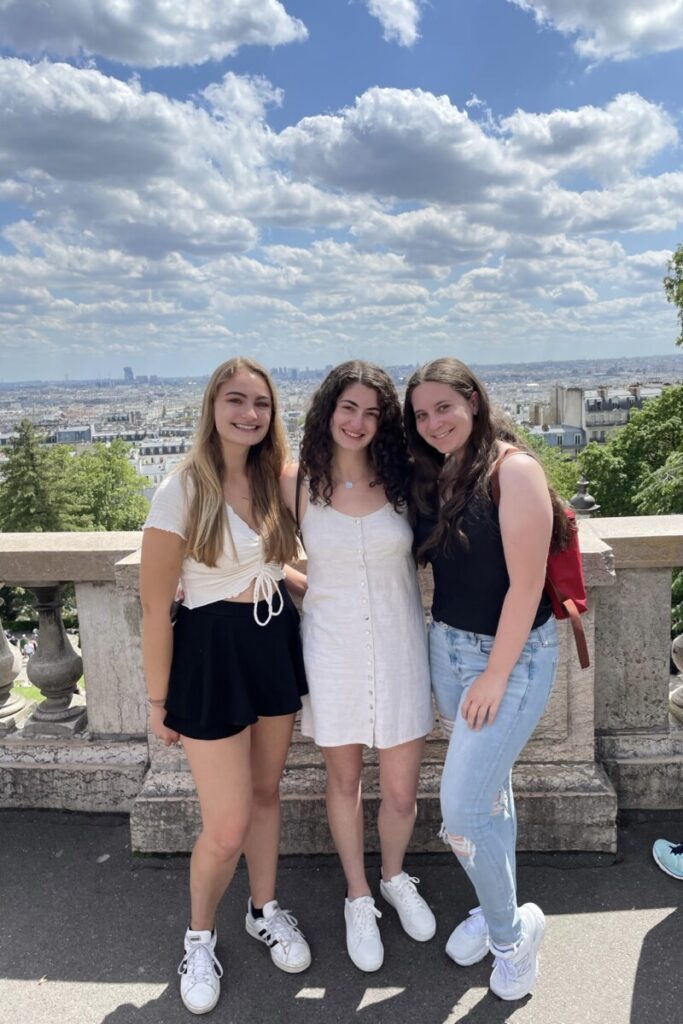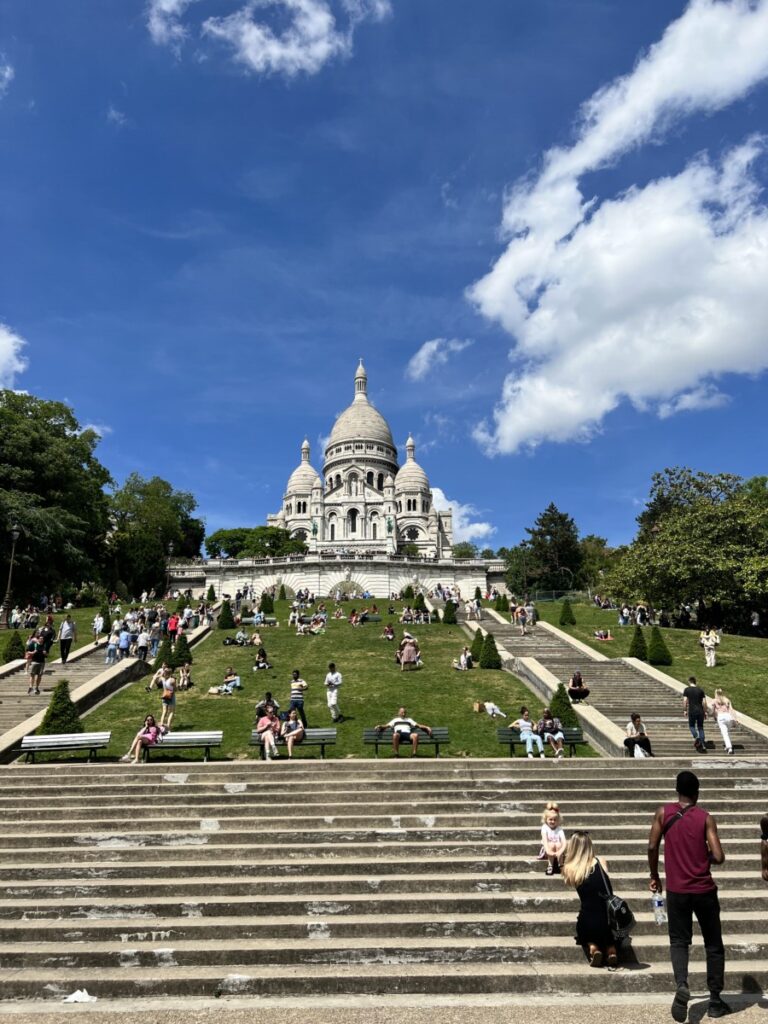On Saturday, May 21st, Lauren, Sam, and I visited Sacré-Cœur Basilica, known in English as Basilica of the Sacred Heart. The Basilica is located in the 18th district, an easy walk from our apartments. We walked over stopping for some delicious ice cream along the way. When we got to the Basilica, I did not realize it was located on the summit of the butte Montmartre, which is the highest point in the city. While this created a very picturesque scene, it also meant a lot of stairs to get up. Taking a couple of breaks along the way, we made our way to the top and were rewarded with a gorgeous view of the city. We then entered the Basilica to take in its beauty and learn about its history.

The Basilica’s construction was complete in 1914 and it was consecrated in 1919. It is a Roman Catholic church that is considered both a political and cultural monument. On the inside, the walls and ceiling are covered in paintings and stained glass windows. There are also exhibits highlighting key figures in their history. Although I am Jewish and did not recognize many of the figures or understand their traditions, I could appreciate the beauty and significance of the Basilica to those who connect with it.

When thinking about how to connect this visit with class content, I was curious if there was literature on the neuroscience of religion. I found a review examining religion, spirituality, and their neurobiological correlates (Rim et al., 2019). The review pulled from studies where individuals with different opinions on the importance of religion/spirituality and different levels of engagement in religious/spiritual behaviors were studied using EEG, fMRI, and sMRI to explore neural correlates.
One study in the review that stood out to me was where fMRIs were done while praying (Schjødt et al., 2008). They found that there was increased activation in the caudate nucleus during religious recitals compared to secular recitals. With this finding, the researchers were able to support their hypothesis that repetitive engagement in religious prayer can stimulate the dopaminergic reward pathway. As someone who grew up in a religious environment but never felt spiritually connected, I found this very interesting and it helped me understand why others can feel so connected to religion and prayer while I might not.
Overall, I enjoyed the beauty of the Basilica both inside and out and found it fascinating to explore the neuroscience of religion.
Reference
Rim, J. I., Ojeda, J. C., Svob, C., Kayser, J., Drews, E., Kim, Y., Tenke, C. E., Skipper, J., & Weissman, M. M. (2019). Current Understanding of Religion, Spirituality, and Their Neurobiological Correlates. Harvard review of psychiatry, 27(5), 303–316. https://doi.org/10.1097/HRP.0000000000000232\
Schjødt, U., Stødkilde-Jørgensen, H., Geertz, A. W., & Roepstorff, A. (2008). Rewarding prayers. Neuroscience Letters, 443(3), 165–168. https://doi.org/10.1016/j.neulet.2008.07.068
